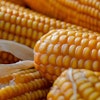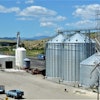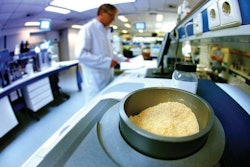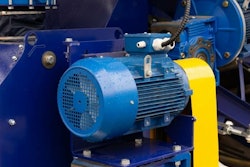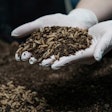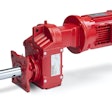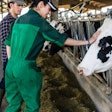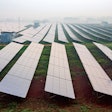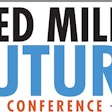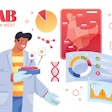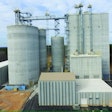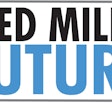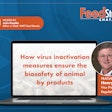Trouw Nutrition’s director of sustainability shares his perspective
As new regulations and environmental footprint goals are adopted across the European Union, animal protein producers and their allied industries are required to rethink and rework their operations, management practices and supply chains to align with greener measures. Here, feed and feed additives play a critical role in the future ofsustainable animal protein production.
Trouw Nutrition‘s director of sustainability, Coen Smits, joins the Chat to address some of the strategic measures and innovations feed producers should embrace to achieve these targets.
Transcription of Feed Strategy Chat with Coen Smits, director of sustainability, Trouw Nutrition
Jackie Roembke, editor in chief, WATT Feed Brands/Feed Strategy:Hi, everyone. Welcome to Feed Strategy Chat. I’m your host, Jackie Roembke, editor in chief of WATT Feed Brands and Feed Strategy magazine.
This edition of Feed Strategy Chat is brought to you by WATT Global Media and FeedStrategy.com. FeedStrategy.com is your source for the latest news and leading-edge analysis of the global animal feed industry.
Today, we’re joined on Zoom by Coen Smits,Trouw Nutrition’s director of sustainability. He’s here to give his take on how sustainability is shaping the European agrifood industry. Hi, Coen, how are you today?
Coen Smits, director of sustainability, Trouw Nutrition:Hello, Jackie, nice to talk to you.
Roembke:Nice to talk to you as well. Let’s get right into it.How would you summarize the current sustainability climate in European agrifood production — both from a government and an industry perspective?
Smits:Thanks for the question, Jackie. Well, the current climate in general in Europe and in agrifood production is, of course, heavily impacted at the moment, is heavily influenced by, the war in Ukraine. We are at historical high energy, raw material [and] feed prices. Our main challenges for the feed industry is managing their supply chains, managing the cost price, and keeping up with profitability. And this is, of course, at the moment at the top of the priority list.
Nevertheless, I’m really sure that making progress and sustainability remains high on the agenda. And the difference here with some years ago is that we have today tough sustainability targets to realize, actually, set by the European Union and by our customers in the value chain. I can give some examples.
TheParis Agreementhas led to theGreen Dealin the European Union with the ambition to reduce our carbon footprint by 55% in 2030 and become carbon neutral in 2050. In addition, there are hard targets set by theEuropean Farm-to-Fork Strategyto become more sustainable in the future with reducing use of antimicrobials, pesticides, fertilizers and promote in general sustainable farming practices.
And on top of that, a number of food industry players and retailers are proactive and even take sustainability one step further. Having even higher demands in sustainability for meat, milk and eggs. So to meet sustainability demands, well yeah, will definitely will become a license to produce.
Roembke:Very good, thank you for that insight.In your opinion, what role does feed production play in the future sustainability of animal protein production?
Smits:Yeah, a very important role, of course, and I really like to talk about it at the conference. I would say in various aspects. First and animal health and welfare, nutrition is definitely one of the pillars for programs to reduce antibiotic use. There, we can really support gut health by functional feed ingredients and feeds. And besides that, farmers, of course, have to follow antibiotic-use reduction program and these pillars are in biosecurity, setting a well-targeted vaccination program, and using best farming practices. With this package, nutrition is also a vital pillar, and it is really possible to make significant progress in reducing antibiotic use. And we really have done so in many countries in Europe.
The second area is the environmental care area. Climate change — feed itself contributes really significantly to the carbon footprint of animal products ranging from 30% to 40%, for milk, and more than 70% for pork and broiler meat. And with the use of ingredients with a lower carbon footprint, for example, higher levels of circular use, food co-products, we can achieve significant reductions.
Another option is to replace soy and palm originating from locations with a high deforestation risks. They carry a relative high footprint, and we need to replace them — not only for carbon footprint reasons, but also for for biosecurity reasons.
And finally, the feed industry can also play a key role in lowering nitrogen, phosphorus emissions by specifically designed for feed proteins. So we already do that. And there’s really enough knowledge to lower dietary protein levels and total phosphorus levels and apply multi-phase feeding programs that follow animal nutrition requirements more closely.
So there’s, from a technical point, really more possible at the moment than what is economically feasible. So it’s really important that also feed industry works closely together with our customers to find the right balance between cost and reward. And we are actually already doing that, as we speak, of course.
Coen Smits will present his talk,“Future-proof food production: How the feed industry will fortify the European animal protein sector,”at the2022 VIV LIVE Feed Congresson May 30. Register today:https://bit.ly/3v36JxO
Roembke:What are the most critical innovation investments feed producers can make today, that will help fortify their business in the future?
Smits:Yeah, again, Jackie, I think that most critical are those innovation investments that are related to health and welfare of animals and environmental care. And there’s, of course, always a universal, I would say, almost eternal need for reducing costs in the feed industry. But yeah, the need for feed additives or functional feed ingredients that support good health will also in the future be high.
It may be good to mention here that also soon, the application of high zinc oxide levels piglets in the EU will be banned. And there’s a risk that antibiotic use will be temporarily raised in some countries that rely now on this application. We started, for example, already five years ago with investing in R&D program in this area to come up with alternative strategies, and I believe that we’re now in a good position to support our customers in this area.
On the environmental care side, I see great opportunities for precision farming. It is impressive to see what the progress has been on this side in recent years. And the feed industry can play an important role in this context with precision nutrition programs, following the requirements, the nutrient requirements of the animals as closely as possible, reducing costs, reducing emissions, and maybe nice to mention that we apply in our business highly accurate animal models that can predict how animals will perform based on their nutrition, health status and farm management. And, combined with precision farming, this can be a very powerful approach to reduce emissions while working at the same time on improving performance and profitability.
So the sustainability agenda will drive to a large extent the innovation agenda and I would say be prepared for these future changes.
Roembke:Regarding theNutreco’s Sustainability Roadmap 2025, climate change and circularity are one of the three pillars that the company has identified. Will you please highlight just one element of this effort that you think our global feed industry audience would find interesting?
Smits:Yeah, I think a very important pillar here is the sourcing of more sustainable ingredients, reducing the footprint of our feed. I already mentioned that earlier. We have pretty hard targets also as a company in our Sustainability Roadmap to reduce the carbon footprint of our production sites and energy use there.
But yeah, most important for the overall footprint of animal products are the ingredients. The ingredients have a contribution of more than 90% to the carbon footprint of the final feed.
So what we’ll do is we will engage with our suppliers and encourage them to deliver ingredients with a lower footprint. We will replace ingredients with a high footprint by more sustainable ingredients. And we will invest also in finding novel protein sources, novel ingredients, by investing in R&D and it would also be nice to mention that we have a group in our organization called New Frontiers that is actively scouting startups and scale-ups for novel technologies in this field. And with his group, we also go invest in those companies who have an attractive technology and proposition and in the area of these alternative protein sources. I will talk more about this in detail at the conference.
Roembke:Excellent. Well, thank you for mentioning the conference. If you will be in Utrecht for VIV Europe, consider joining us at theEuropean LIVE Feed Congresson May 30. Here, Coen will talk about the feed industry’s part in future-proofing the European animal protein sector. For more information, visitfeedstrategy.com/feed-strategy-events.
Smits:Thanks, Jackie. You’re welcome.

